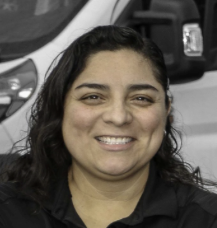When most people hear the term “hazardous cleanup,” their minds jump to dramatic Hollywood crime scenes or high-tech hazmat suits. But the reality of trauma, biohazard, and environmental cleanup is much more nuanced—and often misunderstood.
As a professional in trauma scene cleanup, biohazard remediation, and environmental restoration, I encounter myths about what we do every day. These misconceptions mislead the public and can lead to dangerous decisions, legal issues, and serious health risks.
So today, I’m here to set the record straight.
Here are 10 of the most common myths about hazardous cleanup—and the truth behind them.
Myth #1: Anyone Can Do Hazardous Cleanup With Some Bleach and Gloves
Busted: While household cleaning products might disinfect your kitchen, they are not effective—or safe—for trauma or biohazard scenes.
Trauma cleanup involves bloodborne pathogens, infectious materials, and hazardous waste that require:
- Industrial-strength disinfectants
- Specialized PPE (Personal Protective Equipment)
- EPA- and OSHA-compliant protocols
Using household cleaners on a contaminated site puts everyone at risk—including future occupants.
Myth #2: Cleanup Crews Only Handle Crime Scenes
Busted: Crime scene cleanup is just a small part of what we do.
Professionals in this field handle a wide range of situations, including:
- Unattended deaths
- Suicides and homicides
- Hoarding and animal hoarding
- Sewage backups
- Drug contamination (like fentanyl or meth labs)
- Mold and environmental hazards
If it’s dangerous, contaminated, or emotionally traumatic—our team is the one called in.
SEO Keywords: trauma cleanup services, hoarding cleanup, meth lab decontamination
Myth #3: The Fire Department or Police Handle Cleanup
Busted: First responders do not clean up trauma or biohazard scenes.
Police, EMTs, and fire crews are focused on saving lives and securing the area. Once their job is done, they leave—and the cleanup is the responsibility of the property owner.
That’s when a professional hazardous cleanup company is called in.
Myth #4: Insurance Doesn’t Cover Hazardous Cleanup
Busted: In many cases, homeowners insurance policies DO cover the cost of biohazard cleanup—especially in situations involving:
- Death
- Blood and bodily fluids
- Water or mold damage
- Vandalism or crime scenes
As professionals, we work directly with insurance adjusters to document the scene, handle paperwork, and ease the financial burden.
Myth #5: If It Looks Clean, It’s Safe
Busted: Just because a space looks clean doesn’t mean it’s free from dangerous pathogens.
Blood, viruses, and bacteria can:
- Soak into carpet padding and wood subflooring
- Linger on surfaces as microscopic residue
- Travel through HVAC systems or airborne particles
We use ATP testing, HEPA filtration, and hospital-grade disinfectants to confirm when a space is truly clean and safe to reenter.
Myth #6: You Can Throw Biohazard Waste in the Trash
Busted: Absolutely not.
Biohazardous materials—like blood-soaked items, sharps, feces, or contaminated clothing—must be disposed of following strict state and federal laws.
This includes:
- Labeling as regulated waste
- Transportation in secure, marked containers
- Disposal at licensed medical waste facilities
Improper disposal isn’t just dangerous—it can result in fines and legal consequences.
Myth #7: Hazardous Cleanup Is All About Cleaning
Busted: While cleaning is part of it, hazardous remediation also involves:
- Decontamination
- Disinfection
- Odor removal
- Structural removal and repair (such as flooring, drywall, or HVAC systems)
- Insurance reporting and documentation
We don’t just “clean up”—we restore safety and habitability to homes, businesses, and vehicles.
Myth #8: Only Commercial Properties Need Professional Cleanup
Busted: Residential properties often need it more.
Unattended deaths, suicide scenes, hoarding homes, or basement floods happen just as often in private homes as they do in businesses. And in homes, the emotional toll is often greater.
Whether it’s an apartment, house, or mobile home, we’re trained to handle all residential hazards discreetly and compassionately.
Myth #9: You Don’t Need Certification to Work in This Field
Busted: This myth is one of the most dangerous.
Hazardous cleanup professionals must be trained and certified in:
- OSHA Bloodborne Pathogens Standard (29 CFR 1910.1030)
- HAZWOPER (Hazardous Waste Operations and Emergency Response)
- IICRC Trauma and Crime Scene Technician (TCST)
- DOT waste transport
- Respirator Fit Testing and PPE Use
Working without these puts workers, clients, and the public at serious risk—and can violate federal regulations.
Myth #10: It’s Just a Job—No Emotional Impact
Busted: This job can be emotionally intense.
Daily, we walk into scenes of loss, grief, trauma, and tragedy. It’s not just about wearing gloves—it’s about carrying emotional weight, treating families with dignity, and staying professional in heartbreaking situations.
That’s why mental health awareness, compassion training, and support systems are crucial for us in this line of work.
Final Thoughts: Knowing the Truth Could Save Lives
Hazardous cleanup is a field full of misconceptions, media hype, and DIY dangers. But the reality is simple: this work is serious, specialized, and essential.
It protects lives. It helps people heal. And when done right, it restores peace to spaces touched by tragedy.
Whether you’re a homeowner, business manager, or someone interested in this line of work—understanding the truth behind these myths can protect your safety, property, and peace of mind.
Need Trusted, Certified Hazardous Cleanup?
Our team is fully certified, insured, and available 24/7 to provide discreet, professional trauma and environmental cleanup services.


